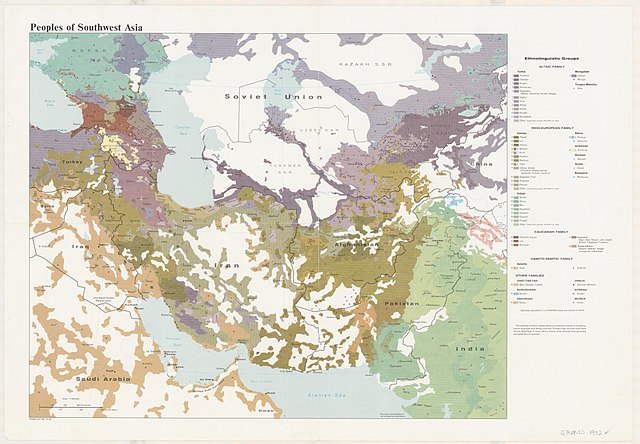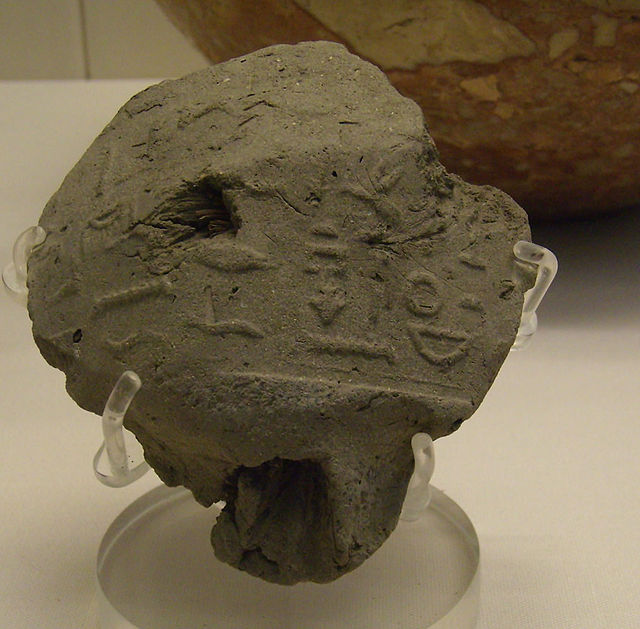Asia is home to hundreds of languages comprising several families and some unrelated isolates. The most spoken language families on the continent include Austroasiatic, Austronesian, Japonic, Dravidian, Indo-European, Afroasiatic, Turkic, Sino-Tibetan, Kra–Dai and Koreanic. Many languages of Asia, such as Chinese, Sanskrit, Arabic, or Tamil, have a long history as a written language.
Ethnolinguistic distribution in Central/Southwest Asia of the Altaic, Caucasian, Afroasiatic (Hamito-Semitic) and Indo-European families.
The Afroasiatic languages, also known as Hamito-Semitic or Semito-Hamitic, are a language family of about 400 languages spoken predominantly in West Asia, North Africa, the Horn of Africa, and parts of the Sahara and Sahel. Over 500 million people are native speakers of an Afroasiatic language, constituting the fourth-largest language family after Indo-European, Sino-Tibetan, and Niger–Congo. Most linguists divide the family into six branches: Berber, Chadic, Cushitic, Egyptian, Semitic, and Omotic. The vast majority of Afroasiatic languages are considered indigenous to the African continent, including all those not belonging to the Semitic branch.
Seal impression from the tomb of Seth-Peribsen (c. 2690 BCE), containing the first complete sentence in Ancient Egyptian.


